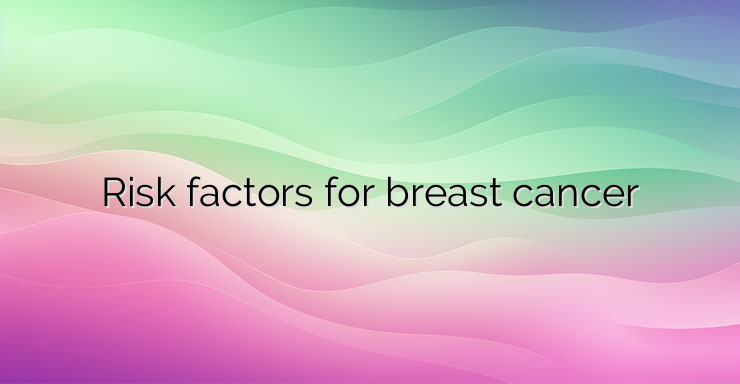For some patients, the risk of developing breast cancer is higher regardless of lifestyle. What are the risk factors? Gender: Over 99% of breast cancers are diagnosed in women; Age: about 80% of breast cancers are diagnosed in women over 50 years old, 20% of them – in women under 50 years old, half of them – in women under 30 years old. The average age of diagnosis is 61, but one-third of breast cancers are diagnosed after age 69. Family genetic predisposition; History of previous breast cancer: recurrence is three to four times more likely. For example, the presence of noninvasive ductal breast cancer increases the risk of developing invasive breast cancer eight to tenfold. Non-invasive lobular breast cancer increases the risk of developing breast cancer in both breasts. Breast lesions: in the presence of proliferations of non-cancerous cells in the breast – intraductal epithelial hyperplasia. Depending on the characteristics of these cells, the risk of developing breast cancer varies. Chest radiation therapy: repeated administration of ionizing radiation to the chest area – for example, in the treatment of Hodgkin’s disease or to screen for lung disease – increases the risk of breast cancer, especially if the radiation therapy was performed before the age of 30. Prolonged exposure to estrogens; Genetic factors In the presence of first-line relatives – a daughter, mother’s sister, who has been diagnosed with breast cancer, the risk of developing breast cancer increases up to two times in other family members. This risk increases in the presence of: Two first-line relatives who have been diagnosed with breast cancer; First-line relatives who have been diagnosed with ovarian, colon or rectal cancer; A first-line relative who developed two types of breast cancer; A male relative who has developed breast cancer; This familial predisposition is due to mutations in certain genes. Scientific research has analyzed “familial” breast cancers, where the cause is a genetic predisposition, which is seen in 5 to 10% of breast cancers. The most commonly observed are two genes: BRCA 1 and BRCA 2, mutations of which are associated with a higher incidence of breast and ovarian cancer in women, but also breast cancer in men. These genes code for proteins that protect cells from cancerous transformation. In the presence of a mutation in these genes, this cancerous transformation becomes more likely. About two in a thousand women have mutations in the BRCA 1 and 2 genes. Other, rarer mutations have also been observed and analyzed for their association with a higher risk of developing breast cancer. Estrogens and breast cancer Breast cells are sensitive to estrogen, the female sex hormone, and in particular to the presence of estrogen in the blood throughout life. All factors,which increase the total duration of exposure to estrogen in the blood, increase the risk of developing breast cancer. The risk of breast cancer is increased in: Women who menarche before the age of 12; Women in whom menopause occurred after the age of 50; Women who have not had children – estrogen sharply decreases during pregnancy and breastfeeding or those who have given birth to their first child after 35 years; Obesity – fat produces estrogen, especially after menopause; Therefore, women who have had several children and breastfed them have a lower risk of breast cancer. What lifestyle factors increase the risk? Overweight and obesity after menopause; Smoking and even passive smoking; Frequent consumption of alcohol; Sedentary way of life; Hormone replacement therapy in menopause – intake of estrogen and progesterone, which is applied continuously for more than five years; Taking contraceptives continuously for a period of more than four years: these therapeutic agents increase the risk of developing breast cancer, but this increased risk disappears ten years after stopping use. However, contraceptives reduce the risk of ovarian cancer, especially in women who have mutations in the BRCA 1 and 2 genes. References: https://www.vidal.fr/maladies/cancers/cancer-sein/facteurs-risque.html


Leave a Reply